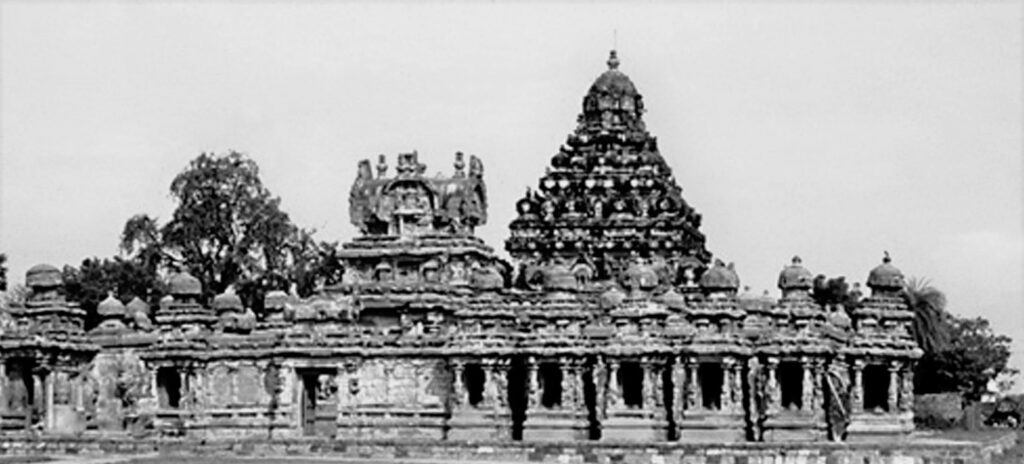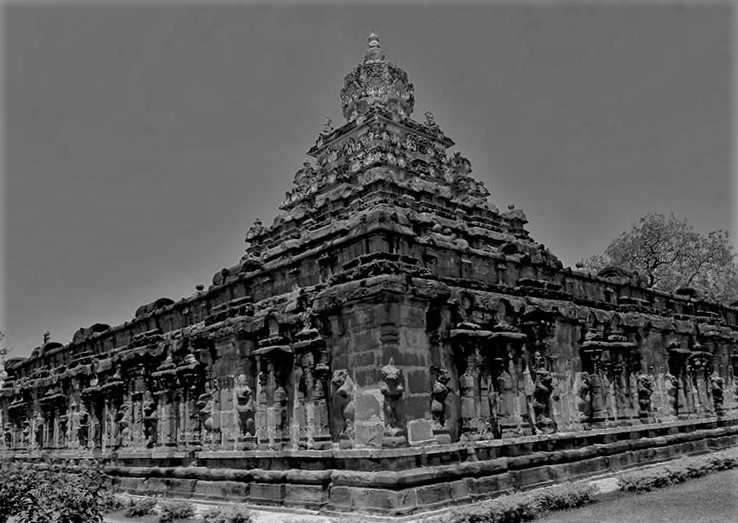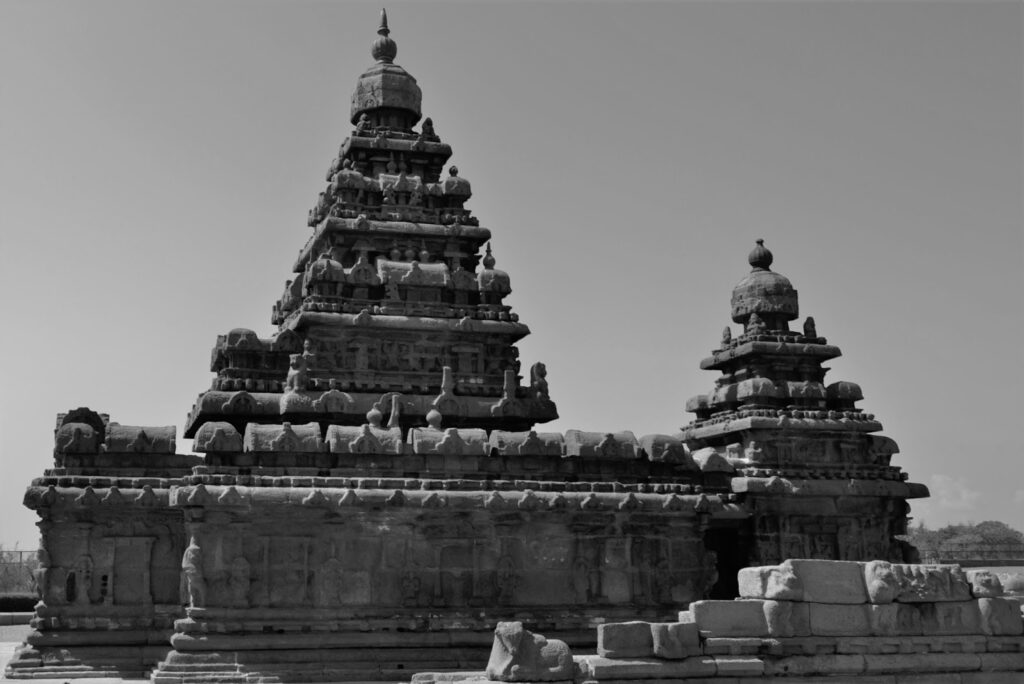Pallava Architecture and Important Pallava Temples
Mandagappattu Temple,Kailasanatha of Kanchipuram,Vaikuntha Perumal Temple, The Seven Pagodas,Pallava Art and Important Pallava Temples
Pallava Architecture and Important Pallava Temples
The Pallava architecture is known for their four specific styles
1. Mahendra Style: The influence of the cave style of architecture is to be seen in an ancient pillar engraved in the Ekambaranatha (Kanchipuram) temple.
2. Mamalla Style: The seven pagodas are small temples each, of which is chopping out of a single rock boulder. They lie near Mahabalipuram, founded by Narasimhavaraman. These monolithic temples are complete with all the details of an ordinary temple and stand as an undying testimony to the superb quality of the Pallava art.
3. Rajasimha Art: The most famous temple of this style is the Kailasha temple. It has a pyramidal tower, a flat-roofed mandapan and a series of cells surround it resembling rathas. This style is a very elaborate one foreshadowing the ornate Chola architecture.
4. Aprajita Style: This is more ornate resembling the Chola architecture. A few temples built in the style are found at Dalavanur. The noteworthy feature of some shrines is that they are adorned by beautiful life-like images of Pallava kings and their queens.
Important Features of the Pallava Architecture
- The Pallava architecture shows the transition from the Rock Cut architecture to the Stone Built temples.
- The earliest examples of the Pallava art are the rock cut temples of the AD 7th century, while the later examples are of the structural temples built in the 8th and 9th century.
- The rock cut reliefs of the Pallavas are the earliest surviving royal portraits after the Kushana images.
- Mahendravarman 1st introduced the rock-cut Temples. This style of pallava temples are seen at places like Mandagappattu, Mahendravadi, Mamandur, Dalavanur, Tiruchirappalli, Vallam, Siyamangalam and Tirukalukkunram.
- The five rathas, popularly called as the Panchapanadava rathas, signifies five different styles of temple architecture. The mandapas contain beautiful sculptures on its walls. The most popular of these mandapas are Mahishasuramardhini Mandapa, Tirumurthi Mandapam and Varaha Mandapam.
Important Pallava Temples:
Mandagappattu Temple:

This is the first Pallava rock-cut temple, built by Mahendra 1st in the early 7th century. An inscription on the temple calls it the Laksitayatna and dedicates it to Brahma, Isvara and Vishnu. The façade of the rectangular mandapa has four massive pillars and us flanked by niches containing large dvarpalaka images carved in relief.
Kailasanatha of Kanchipuram:

The temple is credited to the initiative and enterprise of the Pallava ruler Narasimhavarman II or Rajasimha (also known as Ajiranakanta, Ranadhira and a Kshatriya Simheshvara) who reigned between AD 690 to 728. The Kailashnath temple is the finest structural project of the Pallavas. It looks as if a chariot from heaven has descended on the Earth.
Vaikuntha Perumal Temple:
This Temple is situated at Kanchipuram in Tamil Nadu and was built in the A.D. 8th century. It was built by the Pallava emperor, Nandiavarman Pallavamalla in the AD 8th century. This Temple is famous for its unique architecture grandeur and religious importance. This Temple is one of the 108 ‘Divya Desam’ dedicated to the Lord Vishnu. This Temple is also called the Tiru Parameshwara Vinnagaram.

The Shore Temple at Mamallapuram was built during the reign of the Pallava King Rajasimha (c. 700-728). Its three sanctuaries are dedicated to Vishnu and Shiva. The Shore Temple is also acknowledged for being the first stone structure made by the Pallavas. Before this, the monuments used to be carved out of the rocks or stones. This group of Temples is an UNESCO World Heritage Site.
The Seven Pagodas:
This Term is closely associated with the Shore Temple of Mahabalipuram. According to a popular belief, once upon a time six other temples stood along with the now famous Shore Temple on the shores of Mahabalipuram’s rock strewn beaches.

In the late 2004, during the Tsunami that struck the coast, the sand deposits of around 500 m from the Shore temples were gulped by the Sea. During this time, tourists and residents were reported to have seen a long, straight row of large rocks emerge from the water just before the waters rushed back again. The Tsunami also made some immediate, lasting changes to the coastline, which left a few previously covered statues and small structures uncovered on the shore like the large Stone Lion left sitting uncovered on Mahabalipuram’s beach.